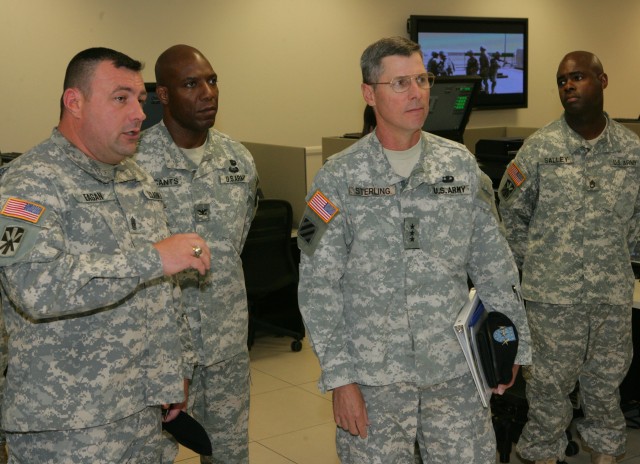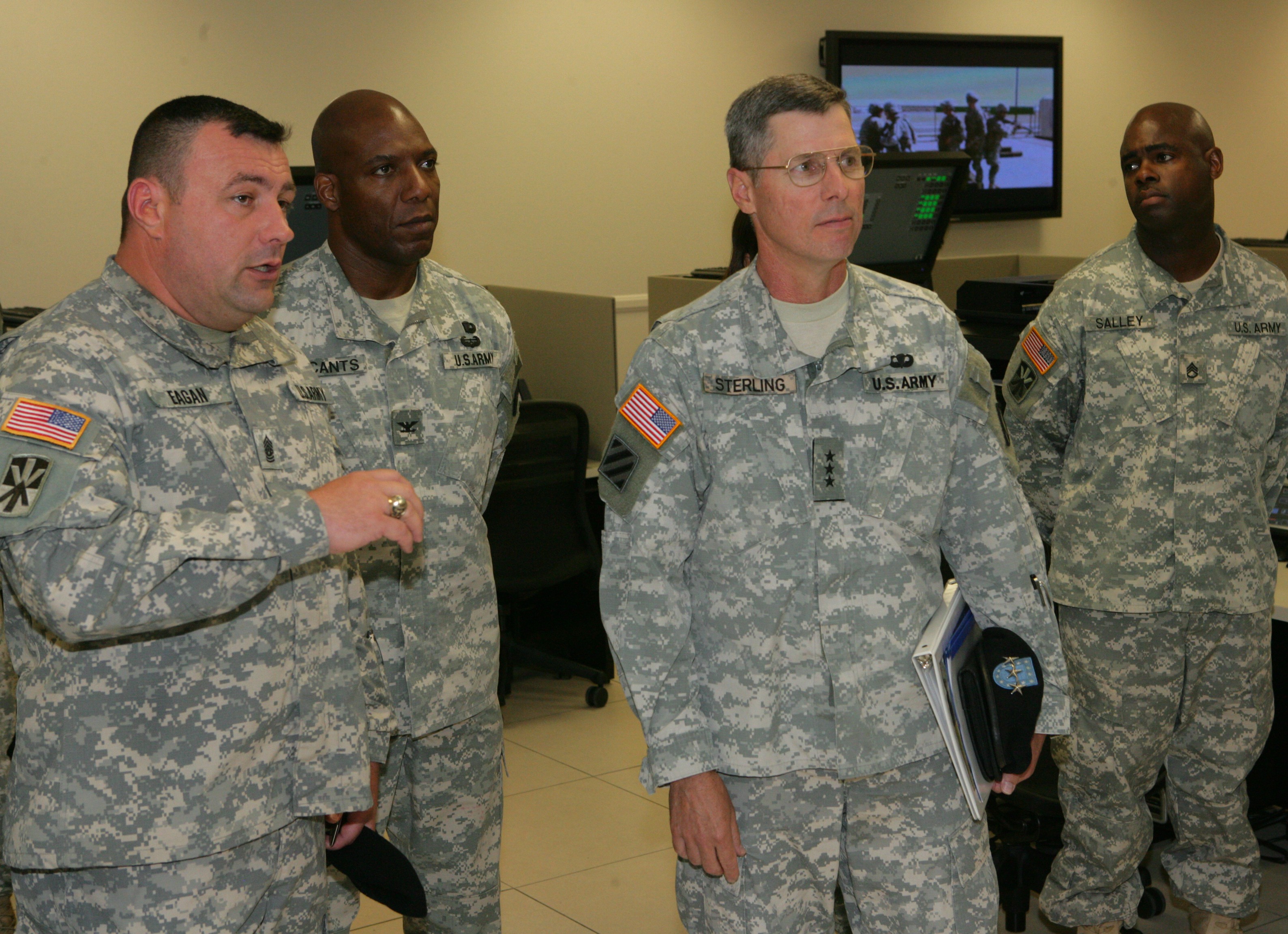
Lt. Gen. John Sterling Jr., U.S. Army Training and Doctrine Command's new deputy commanding general, made his first visit to Fort Sill July 8 and 9.
During his brief two-day tour, Sterling viewed firsthand the integration of air defense and field artillery into the Fires Center of Excellence.
"Soldiers here at Fort Sill are part of setting the strategic footprint for Fires training and capabilities for the next century," said Sterling. "With the construction that's going on here, the FCOE has set the path for great things to come for many decades."
Sterling comes to TRADOC with an in-depth engineering and operations background that he believes will be a good fit with the vision Gen. Martin Dempsey, TRADOC commander, has placed before the command.
"General Dempsey with the Army Learning Concept, the Capstone Concept and the Army Operational Concept is really providing the vision that is driving a lot of great change in TRADOC," said Sterling. "My job as the deputy commanding general is to bring it all together in terms of organizations and processes to help his vision become reality."
He added his visit to the Fires Center showed that vision taking root and flourishing in a number of ways across post. His whirlwind tour began with a look at Fort Sill museums then headed to the east side of post for a look at basic combat training. He then moved onto the Joint Fires Observer building, first for a briefing about the Army Radar Approach Control and the unmanned aircraft systems facility.
Sterling said the radar briefing was good information and emphasized the importance of coming out to Fort Sill to see some of the important issues here, such as modernizing the radar systems.
"It sounds like we have a way ahead that's going to allow some tremendous joint training to take place with that capability," he said.
He added with the exponential growth of unmanned aircraft systems, not only in the Army but across all military branches, finding places to conduct training with them is going to be a challenge.
"I enjoyed the briefing of how those systems are being implemented here at Fort Sill," said the general.
Tour stops at the Joint Fires Observer building and Joint Fires Effects Trainer reaffirmed how Dempsey's vision is becoming reality. Sterling then took in the ADA campus viewing instruction facilities for the Patriot and Stinger missile systems, counter rocket and mortar training, and command, control, communications, computers and intelligence training. Throughout each stop Sterling saw how TRADOC is leveraging technology to train up more adaptable and resilient Soldiers.
The general's brief visit concluded with a tour of Fort Sill's Forces Command units including the 31st ADA, the Army Reserve Center, the 75th Fires Brigade and the 214th FiB.
Like the brilliant greenery brought on by recent rains that caught his attention, Sterling praised the Lawton community for welcoming new growth to the community spurred on by the arrival of the Air Defense Artillery team.
"One of the things we tend to be sensitive to is making sure the community into which a unit is coming or is leaving is able to handle that change," said Sterling. "Based on my discussions with the ADA school it sounds like this entire area embraced this growth at Fort Sill, and that's great to hear."

Social Sharing